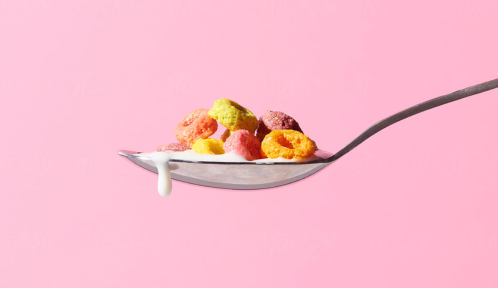Our editors independently select these products. Making a purchase through our links may earn Well+Good a commission
Dietary fiber is the gift that keeps on giving, as it can promote better BMs, support heart health, encourage healthy aging, and then some. Unfortunately, per a 2021 report by the American Society for Nutrition, only seven percent of Americans get enough of it in their diets, so consider this to be a PSA urging you to pack your cart (and ultimately your plate) with more fiber-rich foods.
Experts in This Article
gastroenterologist and medical director at Salvo Health
registered dietitian and gut-health research fellow at King’s College London
However, not all dietary fibers are the same. For instance, there are soluble and insoluble fibers, which work in different ways to offer different benefits.
Hoping to boost your fiber intake and get the best of both worlds? The good news is that there are many foods that include both types of fiber, making it that much easier to diversify your diet (and thus your gut) with a two-for-one deal. We asked Megan Rossi, PhD, RD, a dietitian, gut health research fellow at King’s College London, and author of How to Eat More Plants, to share the best foods that pack both—as well as a few key FYIs on fiber sources.
The benefits of different fiber types and sources
In simple terms, soluble fiber dissolves in liquid whereas insoluble fiber doesn’t. As Max Pitman, MD, gastroenterologist and medical director at Salvo Health, previously told Well+Good, the former slows down digestion and can be helpful for the likes of diarrhea, bloating, and abdominal discomfort, whereas the latter can actually speed up digestion and is thus more helpful for constipation. Still, he explained that eating both types of fiber can offer a variety of benefits, “including stabilizing blood sugar, promoting digestive regularity, reducing cholesterol, and even lowering your risk of developing heart disease and many types of cancer.”
But before we dive in any further, Dr. Rossi notes that it may be more apt to classify fiber in different terms. “Interestingly, over a decade ago, the Food and Agriculture Organization of the United Nations recommended we stop using the words ‘soluble’ and ‘insoluble’ to describe fibers, as there’s close to over a hundred different types and they don’t neatly fit into these categories,” Dr. Rossi says. Instead, she notes that we may be better off prioritizing fiber sources and their unique properties.
For example, Dr. Rossi mentions psyllium husk fiber and inulin fiber, both of which are soluble by definition. “Psyllium husk is a really great fiber for things like constipation,” she shares. “We know that the bacteria aren’t very good at digesting it, so that’s more beneficial for gut symptoms versus fertilizing the bacteria, so to speak.” On the other hand, she continues, inulin is a fiber that functions “like a fertilizer and the bacteria ferment that, producing a range of anti-inflammatory chemicals.” As beneficial as inulin can be in and of itself, Dr. Rossi cautions that foods high in soluble fiber can actually trigger issues in people who struggle with IBS. (If you’re one of them, you may want to hold off on chowing down on specific inulin-rich foods.)
At any rate, prioritizing fresh plant-based foods in your diet is always a good choice to load up on a variety of nutrients to support your gut and greater health. “Whole [plants] contain multiple types of fibers, all of which have different functionalities,” Dr. Rossi reiterates. “Different fibers can feed different gut bacteria, and therefore you get a more diverse range of gut bacteria with more fiber diversity.” From there, she mentions that each bacterium offers different skills, which altogether can ultimately promote a thriving gut microbiome and a cascade of benefits for digestion and beyond.
5 foods that pack soluble and insoluble fiber
This list of foods that offer both soluble and insoluble fiber is by no means exhaustive; in fact, Dr. Rossi says that most fibrous plant-based foods actually contain a combination of both. (Hot tip: Leave your fruit and veggie peels on whenever possible to load up on even more fiber.) With that said, if you need some inspo before you make your next fiber-forward grocery haul, consider stocking up on the following items.
1. Chickpeas
Mediterranean chickpea salad or fresh hummus, anyone? “A half can of chickpeas equates to around 10 grams of fiber,” Dr. Rossi shares, which is over a third of the 28-gram daily value recommended by the FDA. “One of the types of fiber in chickpeas is galactooligosaccharides, a prebiotic that feeds anti-inflammatory gut bacteria like bifidobacteria,” she adds.
2. Oats
Whether you enjoy classic oatmeal, mix up overnight oats, or prefer to bake them into a sweet treat, rest assured that oats provide both soluble and insoluble fiber (in addition to many other micros and macros that can yield impressive benefits for your greater health). “Forty grams of oats contain four grams of fiber. Oats also contain beta glucans, which can help lower blood cholesterol,” Dr. Rossi says.
3. Almonds
Almonds aren’t only a stellar source of heart-healthy fats and plant-based protein. According to Dr. Rossi, they also pack about 3.5 grams of dietary fiber per 30-gram serving (which amounts to approximately 20 almonds), making them a great snack to keep in your pantry to enjoy by the handful, atop a salad, or soaked and tossed into your favorite smoothie.
4. Firm tofu
Dr. Rossi says that firm tofu is an excellent source of plant-based protein, which makes it a worthy stand-in for animal proteins. Moreover, she shares that 125 grams (nearly 4.5 ounces) of firm tofu contains three grams of fiber in total. “It also contains phytoestrogens, which are linked with lowering your risk of breast cancer,” she adds.
5. Tomatoes
Lastly, Dr. Rossi recommends loading up on tomatoes if you’re seeking the top whole food sources that contain soluble and insoluble fiber. “One tomato contains 1.5 grams of fiber as well as lycopene, a type of plant chemical that can help protect your skin from UV damage,” she says. You can get your tomato fix in any number of ways, from sauces and salsas to any number of creative salad combinations. Consider cooking up this Mexican chickpea and tomato stew—which just so happens to be one of my favorite plant-based recipes—to go the extra mile where soluble fiber, insoluble fiber, *and* protein are concerned.
On the flip side, if you’re looking to cut back on your fiber intake for whatever reason, these low fiber fruit options might help.
Sign Up for Our Daily Newsletter
Get all the latest in wellness, trends, food, fitness, beauty, and more delivered right to your inbox.
Got it, you've been added to our email list.











